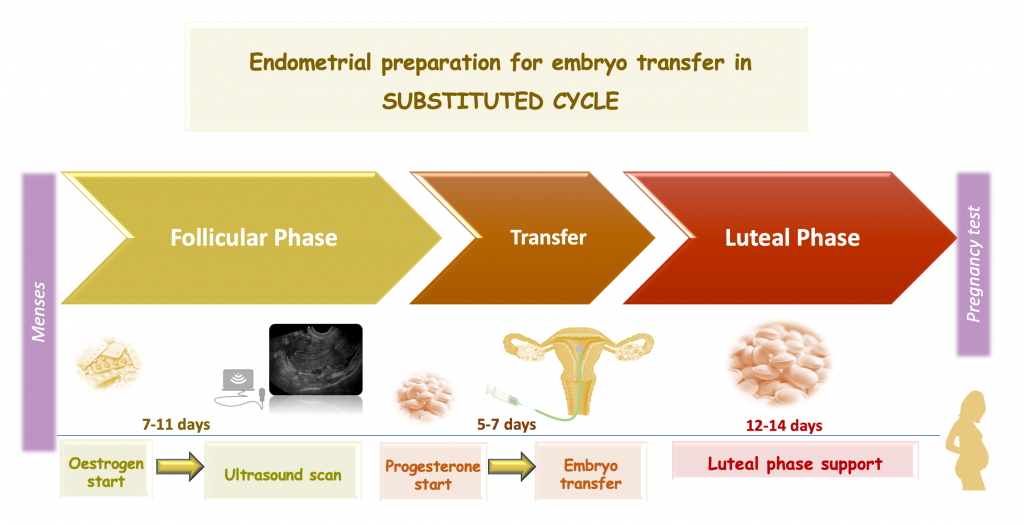To transfer frozen or vitrified embryos, it is necessary to prepare the woman’s uterus for embryo transfer, so that the endometrial implantation window coincides with the stage of the embryo.
Embryos are usually frozen or, more frequently today, vitrified on day 3 or 5 of development. This means that, after obtaining the eggs and having fertilized them, embryos are kept for a few days in culture to confirm their viability. This period of culture in the laboratory, will allow choosing the best embryo for fresh transfer and those remaining embryos will be vitrified for future cycles.
When we want to transfer the vitrified embryos, we have to prepare the endometrium, since its correct development and maturation will make implantation possible.
There are different ways to carry out this preparation, either by taking advantage of the natural cycle of women or by carrying out an artificial cycle.
In a natural cycle, spontaneous follicle growth is controlled during the follicular phase of the menstrual cycle without adding any medication. When the follicle reaches 17-18 mm and the endometrium reaches at least 6-7 mm, ovulation is induced and 5 or 7 days later (depending on the stage in which the embryo is frozen), the embryo transfer is performed .

In the artificial or substituted cycle, estrogens are administered from the beginning of the cycle and the growth of the endometrium is monitored. Once the endometrial thickness of 6-7 mm is reached, treatment with progesterone is started and 3 or 5 days later the embryo transfer is carried out.

In any case, the thawing or devitrification of the embryos is usually carried out a few hours before the embryo transfer, so that biologists can have acorrect evaluation of the embryo and can confirm its viability before transferring it to the woman’s uterus.
We will talk later about the indications, advantages and disadvantages of each of these treatments …

